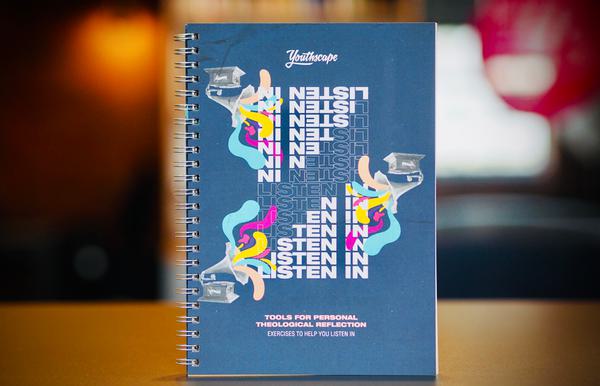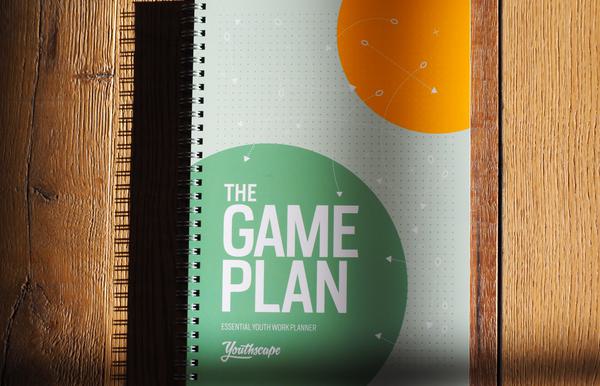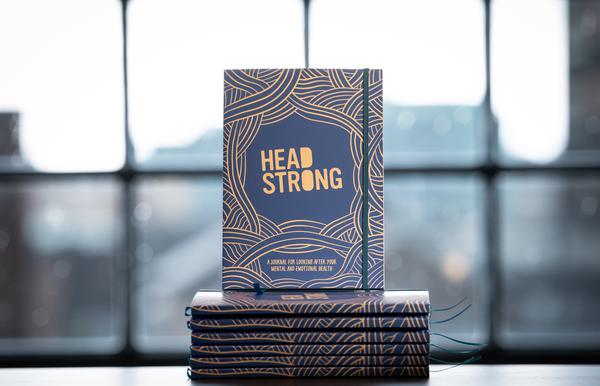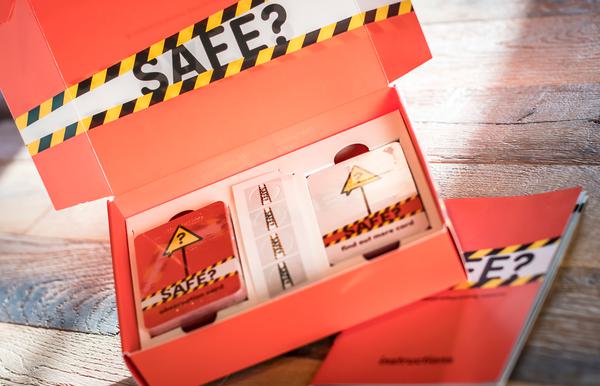How do you respond to stress? How does that shape young people? David Bunce explains the ‘drama triangle’ concept and how it can help when dysfunction dominates a team.
Let me take you back to a happier, simpler time. It is 2008. Gordon Brown is the Prime Minister. And in the world of Gavin and Stacey, the crew from Barry Island are sitting in Dave’s coach heading down to Essex for Christmas at the Shipman’s. The trouble is: not all is well. Gavin has been offered a job back down Barry – but practically no-one knew that he was moving away from Essex. Least of all Pam and Smithy. Long story short, after much alcohol, the whole secret comes spilling out and there is a late-night argument in the kitchen that ends up with Pete punching Dave.
Pam and Smithy feel hurt that Gavin is moving away from them, leaving them without (respectively) their son and best mate. They are cross with Gavin – but also cross with Stacey and Gwen, as Pam is convinced that they have long been plotting to try and steal Gavin away.
Nessa threatens to meet Pam outside, prompting Bryn to jump in between them and rescue Pam from the inevitable defeat. Things spiral and eventually Pete ends up punching Dave and everyone goes to bed.
Let’s hit pause.
What does this all have to do with youth work? Well, it’s a good introduction to a concept that can help us understand what happens in conflict in youth groups and churches – the concept of the drama triangle. This is a model of social interactions which was first developed by Stephen Karpman in the mid-1960s (if you want the nerdy title, it falls into a discipline in psychology called transaction analysis – it’s quite closely related to the concept of Family Systems Theory that I’ve written about here).
Karpman suggests that when social systems are dysfunctional (and we can maybe also add ‘when we are stressed and not showing up as the best version of ourselves’), people tend to fall into one of three automatic patterns: victim, rescuer and persecutor. Let’s have a look at these roles.
The drama triangle: 3 ways we deal with conflict
The victim often feels trapped and at mercy of the situations outside of their control. They often describe themselves as being powerless, both unable and willing to change what is happening to them. Anything they might try and do? Well, there’s no point – it’s not going to work. Gavin, feeling ganged up on by the angry reactions of everyone else, begs ‘Please don’t make this harder than it already is’. (Very Important Side Note: we are talking about roles that people play in conflict or stressful situations here, not any safeguarding issue where there is an actual victim of abuse – in the latter situation, you need to be following your organisation’s safeguarding policy)
Victims act as a draw to rescuers. They are those people who show up and say ‘let me help you’. They are incapable of standing by and letting others suffer, instead they want to swoop in and fix a situation (think of Bryn throwing himself in front of Nessa in order to ‘protect’ Pam – protection that Pam had not asked for!). They are constantly firefighting and feel far too much responsibility for other’s actions. If you remember my previous article on family systems theory, the victim-rescuer pairing maps well onto the idea of under- and over-functioning.
And then there is the third role: the persecutor. If the rescuer says ‘let me help you’, the persecutor says ‘it’s all your fault’. These are the experts at finding fault – both with the victims and the rescuers – and saying what is going badly in a system, often oppressive and authoritarian. Think of Pam lashing out at Stacey and Gwen – ‘I can just see you in cahoots, asking “How can we get him away from her!”’
The idea is that as people we tend to gravitate towards one of these roles in a stressful situation – and over time, especially when there is recurring or ongoing conflict around in a group or a team, these roles become automatic behaviours that spiral and take on predictive patterns in a given group. The whole thing becomes a merry-go-round where people react unhealthily in predictable ways, a dynamic that no-one can escape from. And this dynamic actually blocks the way to change – everyone is so busy reacting in cruise control that no-one has energy to look at the real issues and work out a way forward towards change.
Let’s think about this in a youth group context.
1. Youth worker as rescuer
Maybe you see yourself as a rescuer to young people – wanting to swoop into their lives and ‘fix’ whatever it is that is causing them pain (for example, a difficult relationship with their parents). You find it difficult to stand by and watch them struggle and so – often to numb your own anxiety in the situation – you jump in to sort it out, often without the young person asking you to do so!
‘Great’, you might think, ‘then the problem is solved’. Well. Maybe. The thing is, you are not necessarily helping because it is what is best for the young person (though you might describe it to yourself like that at the time), but to deal with your own sense of anxiety and helplessness. And in doing so, you are robbing the young person of the opportunity to try and fix it themselves – and maybe learn new skills and new things about themselves in the process. You are effectively keeping them in the victim role, telling them they have no agency in a situation and they need someone else to do it for them.
2. Youth worker as victim
‘The trustees/PCC/lead pastor just don’t understand me. Everything I try and do gets blocked’. Maybe I just see myself as a victim of circumstance, blocked in by the actions of others. Maybe this is served up with an extra need to be ‘Christian nice’ – not rock the boat too much by speaking up about my own needs (maybe for clarity or help at a particular point). And so I clam up – and feel helpless. I can’t do anything to change it. It is just the way it is.
3. Youth worker as persecutor
Maybe you are the expert at knowing who is ‘wrong’ in a particular situation. It is clearly all Person X’s fault, they are the one who is always acting unreasonably – and it is about time that someone stood up to them and called them out on it. And – lo and behold – it just so happens that you are that someone. You call them out onto the mat in front of everyone else (maybe in a team meeting, for example), and call them to account. Maybe you are doing this because you, if you are honest with yourself, also feel overwhelmed in the situation and need the safety and security of ‘being right’ – and what better way than being able to tell someone else that they are wrong?

How can we change?
So, the drama triangle keeps everyone stuck in their own form of cruise control, unable to change or grow or move. It keeps a stressful situation or conflict stuck on repeat. You want to know how to break out? What might health look like?
1. SELF-AWARENESS
First thing is an awareness of the dynamic that is going on – and in particular, I am talking here about self-awareness. How do you show up when it is stressful? How do you show up in conflict? Naming this dynamic – even it if it’s just to yourself – can be the first step in changing the way you react.
2. QUESTION THE NARRATIVE
The second thing is, when you work out what narrative you are living by, is to question the narrative. If you tend towards a victim, maybe you could ask yourself: ‘is it true that I have no options here?’ ‘What are my needs in this situation – how can I express them clearly?’ Just because these narratives feel ‘real’, it doesn’t mean they are the only truth in a given situation – and maybe questioning them gives you the space to react in a different way.
3. DO SOMETHING UNEXPECTED
The third thing is to do something unexpected. If you know you tend to act as a victim, then maybe take some time to work out what your actual needs are, what you need in order to begin to help yourself, and then articulate these clearly. If you tend to function as a rescuer (and I think this is a danger for a lot of youth workers), practice deliberately backing off and managing your own anxiety in the situation. Don’t immediately leap in to ‘fix’ a situation, but wait and see if the young person can begin to fix it by themselves. Or at least wait until they ask for help – and then show up to help the young person see what resources they have in a given situation. Act more as a coach than as an ambulance driver.
One person acting differently to ‘their’ role and moving towards health can affect the whole dynamic of the group – for the better. And ultimately, this is taking responsibility for the only thing you can change in a conflict or a stressful situation – the way you yourself show up and act. Note, however: this has to be a conscious choice to act differently, not simply unconsciously react in a different role – a victim moving to persecutor, for example, does nothing to move the rest of the system towards health. You need to be changing to a role outside of these three ways of being.
4. CONSIDER OUTSIDE HELP
Finally – if the conflict is bad, you might need outside help to begin to break through the dynamic. Ask a trusted pastor, leader, social worker (social workers are often excellent people who thrive in the kind of situations most of us run away from) or mediator. Not that they should come in and fix it for you (be careful of the rescuer-victim dynamic!), but they should come alongside you in your situation and help you to fix it for yourself. Sometimes just having an external perspective can be wonderful. If you have control of budget and it needs some kind of paid help (for example group supervision), please don’t hesitate to do this – it is money well spent by investing in the future of your team.
Maybe if the crew in Gavin and Stacey were aware of their role in the drama triangle, the late-night argument might have developed in a different direction. Just no-one ask what happened on the fishing trip.











